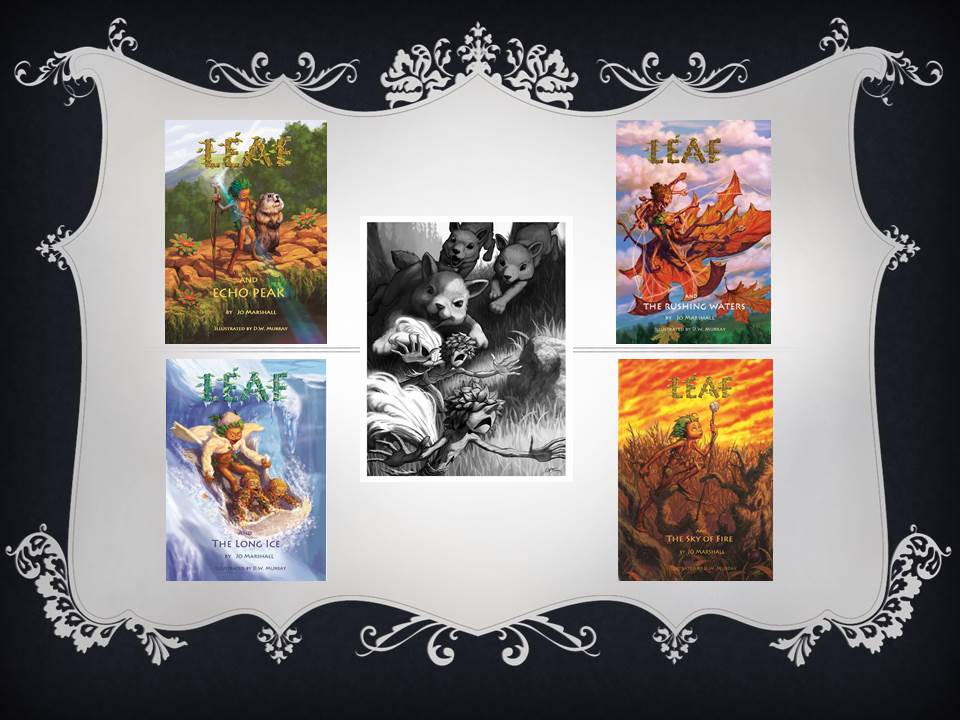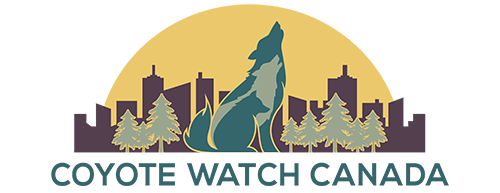Thanks to Lesley Sampson, I am learning more about Coyote Watch Canada’s critical mission to protect and research the eastern coyote. I especially admire their excellent coyote coexistence plan for this region. With conservation and wildlife education programs she inspires children and adults to cherish these beautiful, fascinating creatures and safeguard their local habitats. I’m a children’s book author. In my Twig Stories novels my main character, Leaf, believes we should focus our attention on local habitats, also. We should care for our own ‘tree-home’—the ecosystem in which we live. For Leaf this region is the Pacific Northwest – broadly defined as stretching from Northern California to Alaska and from the Pacific Coast to the western Rockies – a pretty big tree-home. Its wildlife, rainforests, and glaciers are in danger from the consequences of climate change. These threats to Leaf’s ecosystem worry me.

I took my daughter, Ali Jo, on a trip to Yoho Kicking Horse canyon a few summers ago. As a child I had been astonished by the beauty of the mountains and forests of British Columbia and Alberta, and I had been eager to show Ali Jo their splendor. But instead of joy we were sickened by the sight of thousands of rust-colored trees that appeared dead or dying. At the time we didn’t know the cause. We could only puzzle over huge swaths of red trees embedded in vast, green forests. We did realize the magnificent forests of Canada were under attack. When we returned home we searched for information about the cause of the dying forests, and were stunned to find out the cause is climate change. The miniscule mountain bark beetle that in the past had died in frigid winter temperatures now flourishes in a warmer climate. It multiplies into horrific swarms, destroys millions of acres of trees, and as yet no way has been found to stop it. Until recently, many scientists believed the bark beetle would not spread into eastern Canada, but they are already infesting trees in Calgary, and marching eastward.
In a way, our vacation was the beginning of a journey into climate crisis. Even as a 3rd grader, Ali Jo had begun studying species extinction in the Pacific Northwest. For example, the pika population is declining because its cold, alpine habitat is now too warm for nesting. Pikas retreat higher and higher, but food is scarce; the chance of survival, slim. The polar bear is the first animal listed on the Endangered Species Act as threatened because of climate change. The pika will most likely be next. From our valley in Snohomish, Washington we see glaciers on three glistening peaks every day – Mount Rainier, Mount Baker, and Glacier Peak. These volcanoes are considered to be active in geologic terms, and certainly for those of us who experienced Mount St. Helens, possibly also active in our lifetime. We know their glaciers are melting too fast to recover their mass during the winter months, and so white peaks are growing gray. Our valley flooded twice within three years in what is termed ‘100 year floods’ – obviously, not. Then, due to the lack of water in late summer, catastrophic drought and wildfires consumed eastern Washington and western Canada. For a 3rd grader, the reality of a climate out of control so close to home is pretty frightening. And the memories of the dying forests in British Columbia haunt us.
Fortunately for us, Twigs live in the protected old growth forest behind our home, and they are silly distractions from scary climate facts. Long ago we discovered these impish, stick creatures in the massive western red cedars that shade our backyard deck. Nearby, another Twig family hides among the gigantic leaves of an enormous, ancient vine maple. Weird Twigs dress up in colorful feathers, and rush in and out of ferns in the roots of huge, yellow cedars. Occasionally a florescent starling carries daring Twigs from tree top to tree top. Ali and I think Twigs are fascinating to watch. Yet, we also worry how these small, guileless creatures will survive when climate change impacts their tree-homes. So we decided to make up funny and daring adventures for Twigs as they journey into climate crisis.
Twig Stories are eco literature, fantasy novels for ages 8-12 centered on the amusing and thrilling exploits of a young Twig named Leaf and his companions. In Leaf & the Rushing Waters Leaf and his Twig friend Rustle hope to convince a sinister, goliath beaver to dam the raging waters flooding his forest. In Leaf & the Sky of Fire, Leaf takes off on a starling named Pesky to battle swarms of bark beetles, which create an imminent threat of wildfire in the dying North Forest. The glacier-capped, volcanic peaks offer a third adventure, Leaf & the Long Ice, where Leaf’s runaway brothers rescue endangered snow beasts only to be lost in melting ice tunnels. Last in the Twig Stories collection is Leaf & Echo Peak in which Twigs discover there can be adaptation of mammals and plants in extreme climates; a fate similar to the incredible rebirth after the eruption of Mount St. Helens. On glaciers and prairies, in woodlands and rainforests our amusing Twigs ‘stick together’ while they struggle with the destructive events of a warming world. During these journeys Leaf and his friends share humor, courage, perseverance, and skill.
I am always surprised when educators tell me they never heard of bark beetles destroying forests; or didn’t realize the white peaks they see every day may become brown in their lifetimes; or that flood, drought, and wildfire are becoming more extreme and unmanageable. Along with young students reading Twig Stories, Ali Jo and I wonder who will save the forests in western Canada and all the other places vulnerable to climate change. So we share Twig Stories. In doing so, we hope young hearts will be moved by Leaf’s journey into climate crisis, and his desire to protect his forest. After all, Leaf sprouted from a tree – the Old Seeder – a mammoth red cedar, thousands of years old, and now threatened by a tiny insect. So Leaf must defend his tree-home. He bravely confronts climate change, and wonders if you will, too.
Thank you so much, Lesley, for including Twig Stories in your blog’s group, Nature Literature & Wildlife Art With A Heart Resources. It’s gratifying you consider my children’s books worthwhile. I’m in awe of the compassionate work accomplished by Coyote Watch Canada, and hope your activism encourages others to treasure coyotes as you do.
Twig Stories royalties are shared with conservation nonprofits.
Some endorsements for Twig Stories from scientific communities are below:
[blockquote author=”For Leaf & the Rushing Waters ~ Dr. Heidi Perryman, Ph.D.” company=”President and Founder Worth A Dam – Martinez Beavers.org” link=”http://www.beavers.org” target=”_blank”]With her Twig tales, Jo Marshall has done something amazing – tie a story of epic adventure to a naturally anchored account of environmental awareness – all tailored to the fresh, engaging mind of the youngster. Since beavers are already being reintroduced globally to combat the effects of climate change, I am certain the story’s heroes are completely fitting. Our earth is unfortunate in that it currently lacks goliath beavers – so it’s just going to have to make do with lots and lots of regular-sized ones. With unexpected grace, Jo’s charming fantasy helps make the daunting world of beavers and climate change more accessible.[/blockquote]
[blockquote author=”For Leaf & the Sky of Fire ~ Dr. Diana L. Six, Professor, Department of Ecosystem & Conservation Sciences” company=”Integrated Forest Entomology/Pathology, University of Montana” target=”_blank”]This book is a wonderful read. The story and artwork are impeccably crafted and weave a fascinating tale that will help introduce children to the magic and majesty of the natural world. Importantly, it imparts a strong appreciation of the intricacies and interactions that occur in nature. As a child, it was just such books that helped instill within me a desire to understand nature, and ultimately, to work in conservation. This book teaches in the best way possible – by igniting curiosity and building connections with the one thing that truly supports us all- our home, Earth.[/blockquote]
[blockquote author=”For Leaf & the Long Ice ~ Dr. Gwenn E. Flowers, Associate Professor & Canada Research Chair in Glaciology” company=”Department of Earth Sciences, Simon Fraser University” target=”_blank”]Leaf and the Long Ice” chronicles the adventure of two young Twig buds drawn to the mystery of the “Long Ice” by naptime stories. Author Jo Marshall vividly conveys the at once irresistible and perilous quality of glaciers, with attention to the details of glacier architecture and function. Populated by a menagerie of creatures, this story offers readers a chance to journey vicariously to and through part of Earth’s frozen landscape. In so doing, it gives us a glimpse of this threatened natural and aesthetic resource that few are privileged to experience for themselves. The theme of environmental change is woven into the narrative as a backdrop to a story of adventure, danger, camaraderie, and kindness. Readers of all ages will relate to the magic that draws Buddy and Burba to the snow in the first place, and will be reminded of our connection to Earth’s changing cryosphere.[/blockquote]
Here are some links for Jo Marshall and Twig Stories:
Twig Stories website: http://www.twigstories.com (discounts available here!)
Amazon.com Author page: http://www.amazon.com/author/jo.marshall
Facebook book page: http://facebook.com/twigstoriesbooks
Facebook author page: http://facebook.com/twigstories
Twitter & Pinterest: @TwigStories
Discounts on the paperbacks are available through the Twig Stories website.
My kindle and paperback book links on Amazon.com:
Leaf & Echo Peak will be out in 2014!
Bio: Jo Marshall lives in the Pacific Northwest near volcanoes and rainforests. She spent seven years as a literacy tutor for young readers. In 1986, Jo earned a B.A. in German Language and Literature from the University of Maryland in West Berlin, and worked as a diplomatic liaison for the military command. From 1999 to 2006, she worked in D.C. for two nonprofits as their Legal Assistant to the General Counsel – the Paralyzed Veterans of America and Oceana. Jo is a member of the Society of Environmental Journalists, and many conservation nonprofits. She resides in Snohomish, Washington with her family.
Attached is DW Murray’s illustration The Coyote Pups & the Cappynut Twigs from Leaf & Echo Peak. In this forest scene, the colorful, feather-decked Cappynut twins Ruffle and Tuffle try to rescue the orphaned pups, but their plan goes awry when the pups mistake them for birds!
Twigs Speak for the Trees, guest post by Jo Marshall ~ Twig Stories

